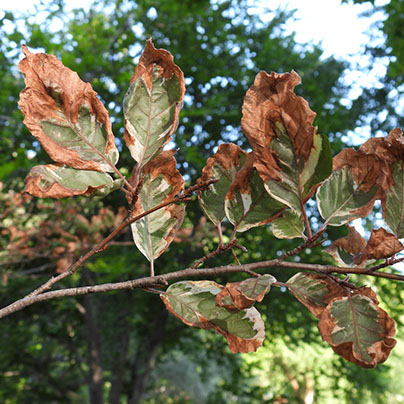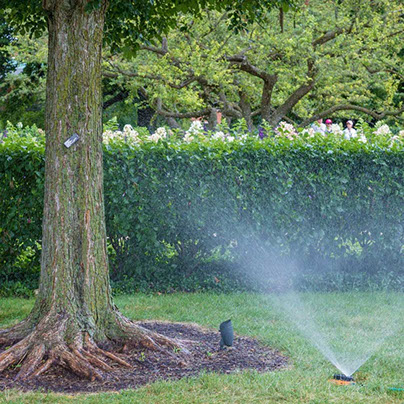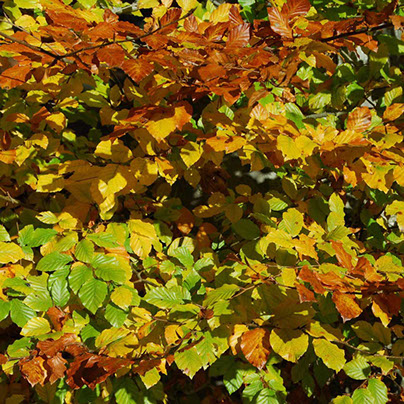The science of preserving nature since 1964
Drought Watch:
Protecting Your Landscape in Hot Weather
As temperatures climb and rainfall becomes scarce, landscapes across the region are entering a period of heightened stress. Even well-established trees, shrubs, and lawns can suffer when consistent moisture is lacking — especially during long stretches of summer heat. Understanding how to protect your plants during dry spells is essential to maintaining a healthy and resilient landscape.
Not all plants respond to drought the same way. Shallow-rooted plants — such as azaleas, hydrangeas, and some ornamental grasses — tend to show signs of water stress quickly. Broadleaf evergreens like rhododendrons and hollies are also vulnerable, particularly if they were already weakened by winter conditions. Young trees and recently planted shrubs are at the greatest risk, as their root systems haven’t had time to establish and are still confined to the top few inches of soil.
The most effective way to support your landscape during dry weather is through deep, infrequent watering. Rather than daily sprinkling, aim to water your trees and shrubs once or twice a week, applying enough to moisten the soil to a depth of 6–12 inches. This encourages deep root growth and helps plants access moisture for longer periods. Use a slow trickle from a hose or a soaker system to ensure water soaks in gradually and doesn’t run off the surface.
For lawns, watering should be done early in the morning—ideally before 9 a.m. — to reduce evaporation and discourage fungal diseases. Lawns generally need about one inch of water per week, including rainfall. During prolonged drought, grass may go dormant and turn brown, but that doesn’t mean it’s dead. Dormant lawns will often recover when cooler, wetter weather returns — especially if they’ve been well cared for.
Mulching is another powerful tool in drought protection. A 2–3 inch layer of organic mulch around trees and shrubs helps regulate soil temperature, retain moisture, and reduce competition from weeds. Just be sure to keep mulch a few inches away from the trunk or stems to avoid rot and pest problems. Almstead offers high-quality, processed hardwood mulch that’s ideal for this purpose.
In times of drought, it’s also wise to avoid practices that add stress — such as heavy pruning, fertilizing with quick release nitrogen (we don't use), or planting new material unless absolutely necessary. Our arborists and lawn care professionals can help determine what care is appropriate now and what should be postponed until fall.
If you’re unsure whether your landscape is getting enough water or which plants may be at risk, we recommend a site visit by an Almstead professional. With expert guidance, you can develop a watering strategy that conserves resources while protecting the health of your landscape through the heat of summer.




LOCATIONS:
Lower Westchester County, NY and New York City
58 Beechwood Ave, New Rochelle, NY 10801
914-576-0193
Upper Westchester (North of I-287)
15 Broadway, Hawthorne, NY 10532
914-741-1510
Fairfield County, Connecticut
547 Hope Street, Stamford CT 06907
203-348-4111
Bergen & Passaic Counties, NJ
504 High Mountain Road, North Haledon, NJ 07508
973-636-6711
Contact us for a Free Consultation
